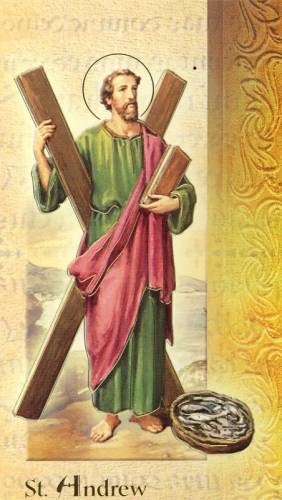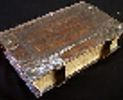St Andrew
Apostle, Martyr

Andrew figures prominently only in John’s Gospel. Andrew was a disciple of John the Baptist, (John prepared the way for his cousin Jesus). Andrew and another disciple see Jesus as the fulfilment of John’s prophetic ministry, and decide to follow Jesus instead of John. He is one of the first two followers of Jesus and the one who introduced his brother, Simon Peter, to Jesus.
Andrew presented to Jesus the boy with loaves and fishes to be used in the feeding of the multitude. There is a connection here with the apostle Philip, they were friends, as they came from the same town. Later, he is alerted by Philip, near the time of the Passover in Jerusalem, that some Greeks would like to speak to Jesus. Andrew then speaks to Jesus about it, which seems to indicate that at this time, Andrew was closer to Jesus than Philip.
As one of the first two to follow Jesus, and also as a kind of bridge with the Gentile world, Andrew is an appropriate missionary apostle. Apart from Andrew’s inclusion among the four who ask Jesus about signs of the end (Mark 13:3), and the listing of his name among the Twelve, the Gospels add no further information about him. There are later but unhistorical traditions about his missionary work and eventual martyrdom, including his execution on an X-shaped cross. He is the patron saint of Scotland.
BORN:
Bethsaida, Syria.
DIED: 30 November 60 A.D., Patras, Greece.
 Welcome
Welcome Calendar
Calendar Today's Word
Today's Word Lauds
Lauds Terce
Terce Sext
Sext None
None Vespers
Vespers Compline
Compline Matins
Matins